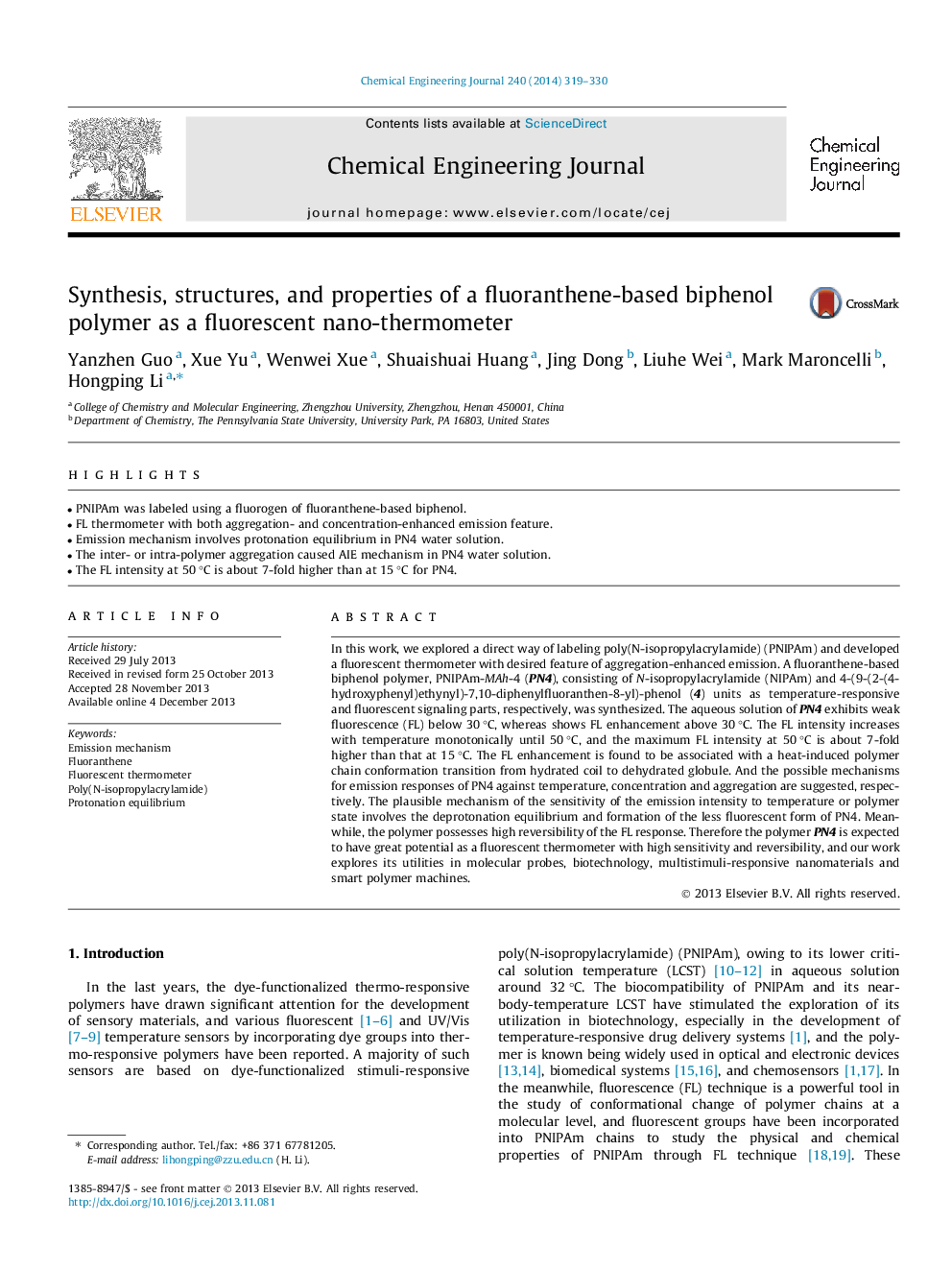| کد مقاله | کد نشریه | سال انتشار | مقاله انگلیسی | نسخه تمام متن |
|---|---|---|---|---|
| 147730 | 456398 | 2014 | 12 صفحه PDF | دانلود رایگان |
• PNIPAm was labeled using a fluorogen of fluoranthene-based biphenol.
• FL thermometer with both aggregation- and concentration-enhanced emission feature.
• Emission mechanism involves protonation equilibrium in PN4 water solution.
• The inter- or intra-polymer aggregation caused AIE mechanism in PN4 water solution.
• The FL intensity at 50 °C is about 7-fold higher than at 15 °C for PN4.
In this work, we explored a direct way of labeling poly(N-isopropylacrylamide) (PNIPAm) and developed a fluorescent thermometer with desired feature of aggregation-enhanced emission. A fluoranthene-based biphenol polymer, PNIPAm-MAh-4 (PN4), consisting of N-isopropylacrylamide (NIPAm) and 4-(9-(2-(4-hydroxyphenyl)ethynyl)-7,10-diphenylfluoranthen-8-yl)-phenol (4) units as temperature-responsive and fluorescent signaling parts, respectively, was synthesized. The aqueous solution of PN4 exhibits weak fluorescence (FL) below 30 °C, whereas shows FL enhancement above 30 °C. The FL intensity increases with temperature monotonically until 50 °C, and the maximum FL intensity at 50 °C is about 7-fold higher than that at 15 °C. The FL enhancement is found to be associated with a heat-induced polymer chain conformation transition from hydrated coil to dehydrated globule. And the possible mechanisms for emission responses of PN4 against temperature, concentration and aggregation are suggested, respectively. The plausible mechanism of the sensitivity of the emission intensity to temperature or polymer state involves the deprotonation equilibrium and formation of the less fluorescent form of PN4. Meanwhile, the polymer possesses high reversibility of the FL response. Therefore the polymer PN4 is expected to have great potential as a fluorescent thermometer with high sensitivity and reversibility, and our work explores its utilities in molecular probes, biotechnology, multistimuli-responsive nanomaterials and smart polymer machines.
Journal: Chemical Engineering Journal - Volume 240, 15 March 2014, Pages 319–330
